Rhubarb: The pink promise of spring
Mark Diacono extolls the virtues homegrown rhubarb and reveals how to get the best out of your crop.
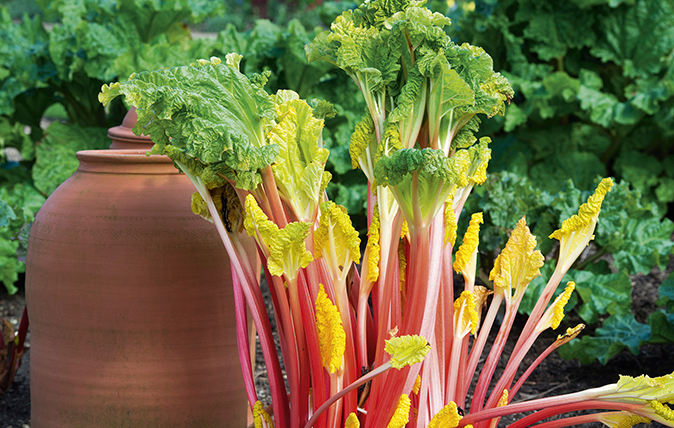

For some, it’s snowdrops; for others, wild garlic. For me, I know the corner to spring will have truly been turned with the first mouthful of homegrown rhubarb. That vivid pink of forced rhubarb seems to be pulled from winter’s snooze by the return of the dawn chorus and the lengthening days.
Rhubarb gives two very distinct harvests: the deliciously sour stalks of summer into early autumn and these paler vibrant-pink forced stems that cheer late winter into spring. I wouldn’t be without either. The latter is rightly expensive to buy – the process of lifting the dormant crowns, taking them indoors to dark warmth to be coaxed into tender, sweet productivity and harvested by candlelight is a specialised and costly business. However, it is one that’s easy to replicate in your own garden.
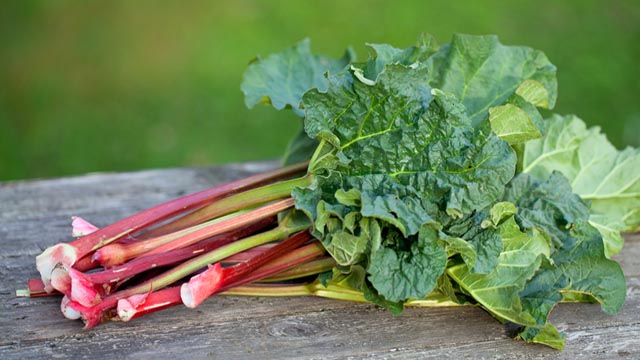
Ceramic forcers that exclude light and create a microclimate are widely available, but I’ve used a large plant pot and an upturned rubbish bin to great effect – the idea is to create a warm environment that fools the plant into thinking it’s late spring. The absence of light prevents photosynthesis. Instead, the plant uses its own starches to drive growth, resulting in the characteristic pale, vivid stems and that characteristic sweetness as the starches are converted to sugar. Manure heaped around the base of the forcer raises the temperature and speeds things along.
I force about a quarter of my rhubarb plants, in a four-year rotation to ensure they aren’t pressed into early service too frequently. Once I’ve picked the early forced stalks, I let them recover for the rest of the year.
Rhubarb will survive in most conditions, but give it full sun or partial shade in a moisture-retentive soil with good drainage and it will be highly productive, healthy and look its best. Plant them as crowns (the dormant core of the plant) or as potted plants, spacing them 32in apart, with the top of the crown just over an inch below the soil surface. Sit on your hands and allow them a year to establish before picking.
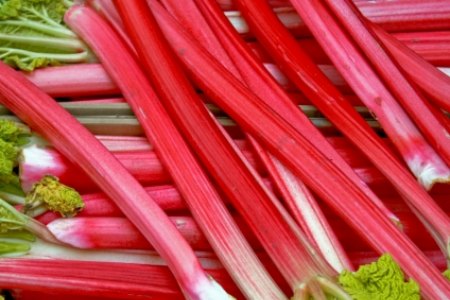
Choice of variety is crucial to both flavour and when you get to enjoy it. I like a long steady harvest, so I grow varieties that overlap in their peak productivity. First up is Timperley Early, a fabulous, reliable early producer from February, earlier still when forced. Prince Albert has a fine flavour, producing bright-red stalks early in the season. Following on is Stockbridge Arrow, a brilliant modern Yorkshire variety that produces masses of long, thick, deep-red stems over a very long season.
For summer, Victoria is the classic heritage variety that wakes late, then gives a long, steady harvest from May into August. I’ve also recently added Sid 51, a superb new variety that produces well into autumn.
Sign up for the Country Life Newsletter
Exquisite houses, the beauty of Nature, and how to get the most from your life, straight to your inbox.
How you harvest is crucial to the beauty and vigour of your plants. Pick by gripping the stem low, near the crown, and twisting as you pull – this separates the stalk without a cutting or snapping wound, which can cause the base to rot. Take only a third of what’s ready on each plant at any given time and stop as it slows in productivity. Remove and compost the green leaves from the stalks you harvest, as they’re high in oxalic acid and not to be eaten.
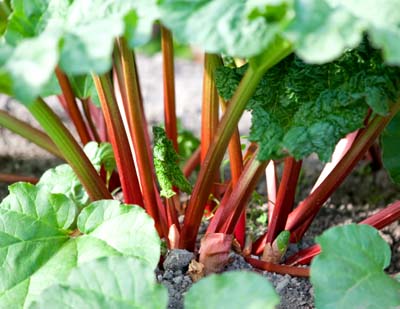
As well as the familiar rhubarb, I grow Himalayan rhubarb (Rheum australe). It’s quite the striking cousin, being wider, taller and with huge, thick stalks. Himalayan rhubarb’s flavour is superb – a little closer to cooking apples than familiar rhubarb, but I tend to pick little as I love its looks. By mid spring, it’s already established a mass of large leaves and is starting to send flower stalks skywards. These striking stems can reach 16ft or more in as little as a week.
Ordinarily, I’d advise you to remove the flower stems the moment you see them on a rhubarb – they take some of the plant’s energies and slow productivity – but these are too marvellous to miss.
The flowers remind me what a striking plant rhubarb is, as deserving of a place for its looks as for its harvest. To keep it at its best, water around (but not on) each crown through extended summer dry spells and mulch around the crown with compost in late winter – this will feed the plant, while helping it to retain moisture through the growing season.
Mark Diacono grows edibles, both usual and unusual, at Otter Farm in Devon (www.otterfarm.co.uk)
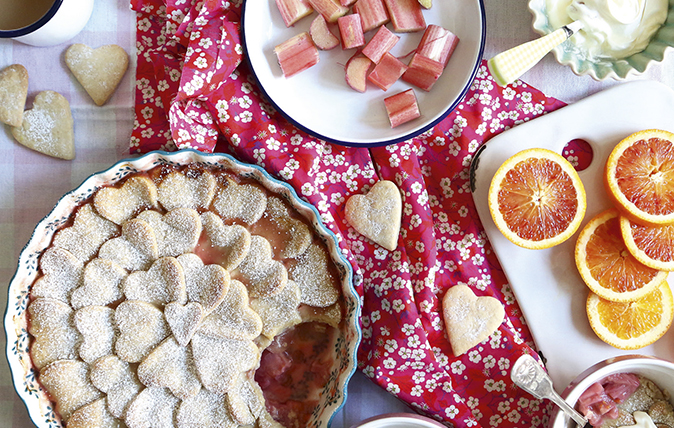
Rhubarb, blood-orange and ginger heart pie
Now's the time to make the most of rhubarb.

Strawberry, rhubarb and almond tart with rosemary ice cream
Strawberries and rhubarb make a delicious combination in this pretty tart.
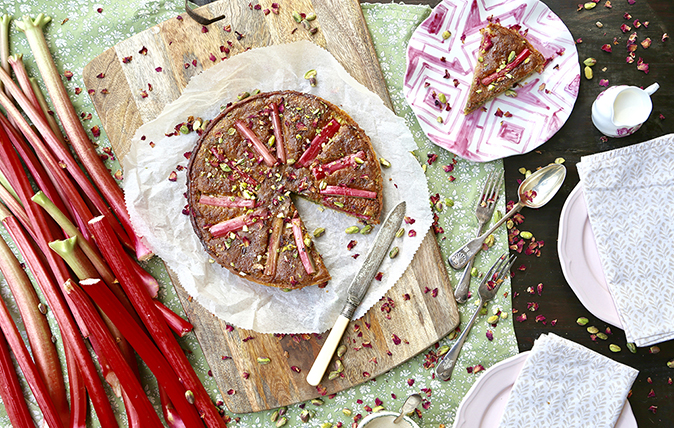
Credit: Melanie Johnson
Rhubarb, rosewater and pistachio-frangipane tart
This exotic-sounding tart is perfect for afternoon tea.
Mark is lucky enough to spend most of his time eating, growing, writing and talking about food. He has written fourteen award-winning books, including A Year at Otter Farm and A Taste of the Unexpected (both won Food Book of the Year, and Garden Book of the Year). Known for growing everything from Szechuan pepper to pecans to Asian pears, Mark's refreshing approach to growing and eating has done much to inspire a new generation to grow some of what they eat. He was involved in the early days of River Cottage, appearing in the TV series, and writing four River Cottage books. Mark writes to a global audience on his best-selling Substack: Mark Diacono’s Abundance.
-
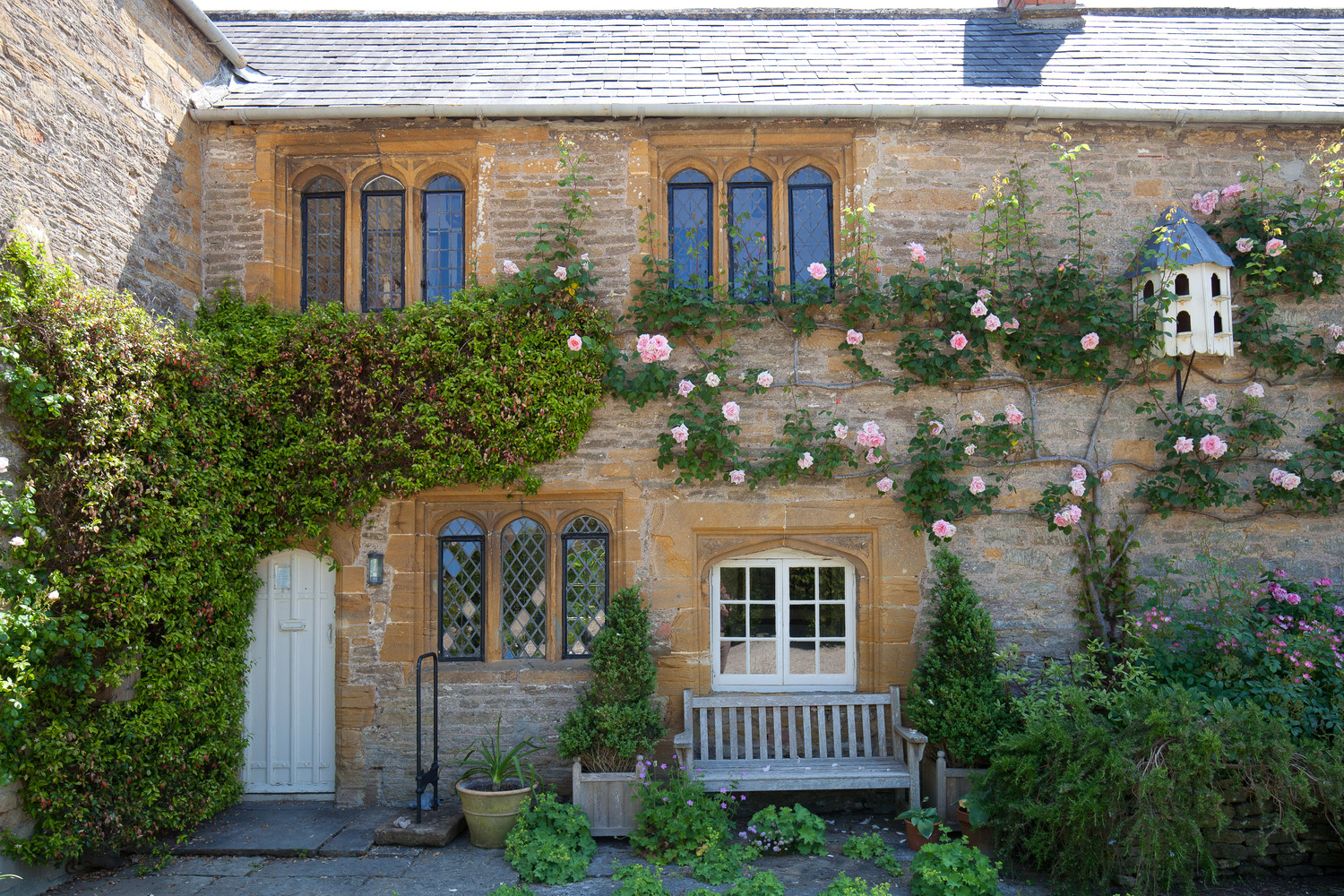 Five outstanding properties, from 3,000 acres in Wales to Robert Plant's old home, as seen in Country Life
Five outstanding properties, from 3,000 acres in Wales to Robert Plant's old home, as seen in Country LifeWe take a look at some of the best houses to come to the market via Country Life in the past week.
-
 Ben Randall: Why your dog behaves for some people, but not others
Ben Randall: Why your dog behaves for some people, but not othersAward-winning dog trainer Ben Randall shares his advice with Country Life readers on one of the most common questions he gets asked.